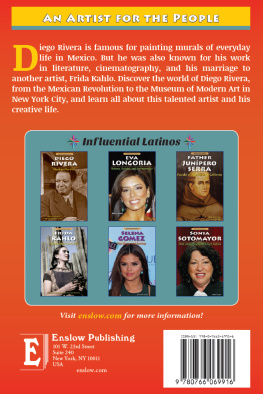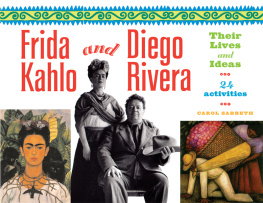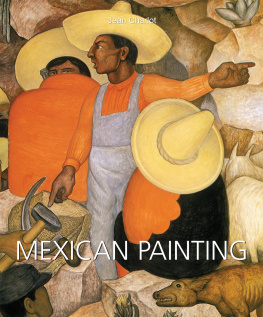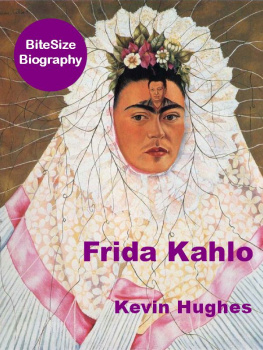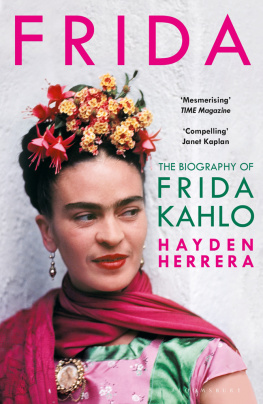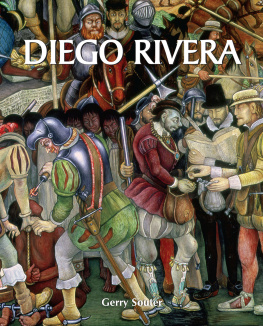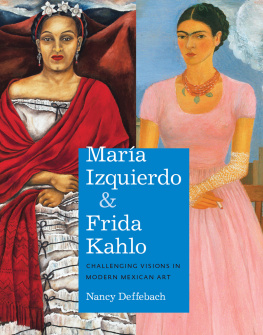Contents
Guide
Pagebreaks of the print version
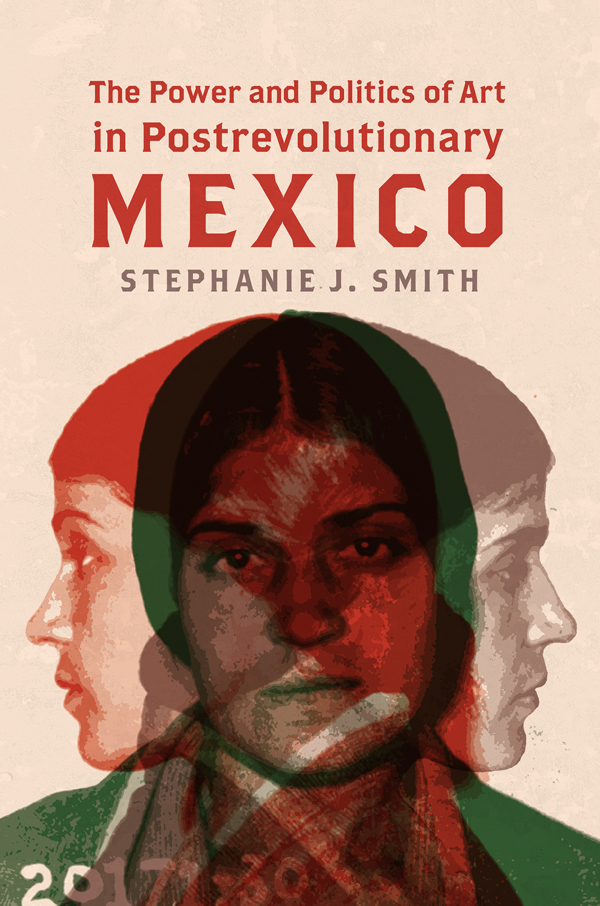
The Power and Politics of Art in Postrevolutionary Mexico
The Power and Politics of Art in Postrevolutionary Mexico
Stephanie J. Smith
The University of North Carolina Press CHAPEL HILL
This book was published with the assistance of the Anniversary Fund of the University of North Carolina Press.
2017 The University of North Carolina Press
All rights reserved
Set in Espinosa Nova by Westchester Publishing Services
Manufactured in the United States of America
The University of North Carolina Press has been a member of the Green Press Initiative since 2003.
Library of Congress Cataloging-in-Publication Data
Names: Smith, Stephanie J., author.
Title: The power and politics of art in postrevolutionary Mexico / Stephanie J. Smith.
Description: Chapel Hill : University of North Carolina Press, [2017] | Includes bibliographical references and index.
Identifiers: LCCN 2017007227 | ISBN 9781469635675 (cloth : alk. paper) | ISBN 9781469635682 (pbk : alk. paper) | ISBN 9781469635699 (ebook)
Subjects: LCSH : ArtistsPolitical activityMexicoHistory20th century. | Women artistsPolitical activityMexicoHistory20th century. | Partido Comunista MexicanoHistory20th century. | Art and stateMexicoHistory20th century. | MexicoHistoryRevolution, 19101920Influence.
Classification: LCC HX 521 . S 575 2017 | DDC 701/.03097209041dc23
LC record available at https://lccn.loc.gov/2017007227
Cover illustration based on 1930 arrest photographs of Tina Modotti (courtesy of Archivo General de la Nacin, Direccin General de Investigaciones Polticas y Sociales, Caja 259, Exp. 34).
For Eva and Jim, both accomplished scholars, and both fiercely dedicated to the transformation of wrongs into rights
Contents
Illustrations
Acknowledgments
This is the book I always wanted to write. The intriguing topic of Mexicos radical artists first grabbed my attention during my previous career as an artist, and the story of their complicated lives continued to inhabit my imagination throughout my current life as an historian of the Mexican Revolution. As I consider these acknowledgments, though, the future looks especially unclear. The 2016 presidential elections are not even two weeks in the past, and the larger-than-life leader of the Cuban Revolution, Fidel Castro, just lost his final battle on earth. The artists throughout this book also faced a murky path forward as they struggled to create a more equitable society through their striking political images. Even if their efforts resulted in fewer political changes than they expected, the art they produced still provides a legacy that confirms the power of culture in times of uncertainty.
Throughout this project, I have enjoyed the support of exceptionally skilled librarians and archivists. As the Associate Curator for Special Collections and the Latin American and Iberian Studies Librarian at The Ohio State University library, Jos Daz carried out the impossiblenot once but twiceby obtaining obscure but key materials, including the microfilm of the Taller de Grfica Popular Records, Mexico City, 19371960. David Lincove, the History Librarian at Ohio State, also helped enormously by acquiring the Comintern Archives: Files of the Communist Party of Mexico, 19191940. I am grateful to work at a university with such talented colleagues and scholars in their own right. Additionally, I would like to express my gratitude to the various Mexico City archives and the knowledgeable staff who generously provided their support and access to documents. Of particular mention are the archivists at the Archivo General de la Nacin who furnished much needed assistance; working at the old penitentiary, with its numerous cats that roamed the halls, was magical. I also would like to thank the Archivo Diego Rivera y Frida Kahlo, the Centro de Estudios del Movimiento Obrero y Socialista, and the other fine archives throughout Mexicos lovely capital. Certainly, this book benefited from the archivists at the beautiful Internationaal Instituut voor Sociale Geschiedenis in Amsterdam, and of course the Pompidou Center, Bibliothque Kandinsky. And without doubt, the remarkable people and resources found in various U.S. institutions, including the Hoover Institution Library and Archives, also significantly strengthened this work.
In Mexico City, those at the Red Tree House, including owners Craig Hudson and Jorge Silva, guaranteed that staying in Mexicos busy capital was both productive in terms of research, but also the best time ever. Craig and Jorge graciously opened their home for delicious dinners and the company of their friends. In 2011, I first began working with my research assistant, Lorena Marcela Botello Ibarra, and her work proved hugely helpful during the years that followed. As a scholar of art history and history, Lorena now curates art shows in Mexico City, and she also writes her own innovative work on Mexicos artists.
Throughout the writing of the book, I have benefited from the thoughtful insights of friends and colleagues. Susan Gauss has been a longtime friend and fellow scholar of Mexico since our days in graduate school. Our discussions on a number of academic issues and nonrelated topics generated exceptionally valuable feedback and fun. At Ohio State, my fellow historians have been a solid source of support. Jennifer Siegel, Margaret Newell, and I shared many meals together, and life in Columbus is so much better because of their friendship. I also would like to thank Lilia Fernndez (now at Rutgers University), Robin Judd, Birgitte Sland, Nathan Rosenstein, Katherine Marino, David Brakke, Bert Harrill, Tina Sessa, Chris Otter, Theodora Dragostinova, Mytheli Sreenivas, Bruno Cabanes, Susan Lawrence, Daniel Rivers, and Ying Zhang. Our friends and neighbors, Keith Speers and Micheal Carroll, offered entertaining nights out in the neighborhood and hours of conversation that covered a wide variety of topics. And finally, thank you to Andrea Ottone for his help in securing the documents from Italy.
Various funding sources allowed me to complete the research and writing of this book. Ohio States Mershon Center for International Security Studies twice awarded funding, once to visit the Hoover Institution Archives and then for travel to Mexico City. OSUs College of Arts and Humanities awarded the Grant for Research and Creative Activity in the Arts and Humanities to begin this project, and they also funded international travel for research. I especially would like to thank the Department of History for its generous support, including the Merton Dillon Fellowship for Research as well as the teaching releases that enabled me to write this book. Additionally, the Center for Latin American Studies at OSU provided a Faculty Travel Grant for Professional Development.
I owe a great debt to Elaine Maisner and the staff of the University of North Carolina Press. Elaine, a superb editor, also was the editor of my first book; working with her again was such a pleasure. Elaine not only offered her valuable advice, but also her wonderful friendship. The two manuscript readers gave insightful comments, and their suggestions made the book substantially stronger.
Since the publication of my first book, my daughter, Eva Smith Pietri, has grown into a scholar in her own right, and now produces promising research in Social Psychology that addresses gender, ethnicity, and diversity in the STEM fields. My husband, James Genova, a fellow historian, continues to offer the gift of friendship and scholarly support, and our respective research trips remain a source of exceptional enjoyment, even while we work. I look forward to seeing Jims and Evies forthcoming research, and certainly the future will be better for their studies. This book is dedicated to Jim and Eva.


